Introduction
If you are also confused about the difference between walking shoes and running shoes, then you are not alone. Apparently, both types of shoes look the same, but in reality, they are not the same. Rather, each activity has its own design. Walking and running are two distinct activities, so there is a notable difference between the two types of shoes. Although the difference is minimal, using the wrong shoes can significantly affect the health, performance, and comfort of your feet, as I myself had used running shoes for walking, which had made me very sore, and my heels had also been somewhat damaged.
In this blog, we will mention the important differences between walking and running shoes so that you can buy the best pair and get comfortable.
What Are Walking Shoes?
According to “Dr. Adam Tenforde, a sports medicine physician at Massachusetts General Hospital,, Walking shoes are designed to provide comfort and support for short and long walks. Unlike ordinary shoes, walking shoes reduce pressure on your feet and provide you with comfort.
Key Features
- Lower Heel Height – Allows the foot to adapt to natural movement with each step.
- Moderate Cushioning – Absorbs light impacts to smooth the walk.
- Lightweight Design – Reduces fatigue during walks, whether long or short, especially over long distances.
Purpose: Ideal for making daily walking, fitness, and long distances easier and providing comfort.
What Are Running Shoes?
According to “Dr. Adam Tenforde a sports medicine physician at Massachusetts General Hospital,, Running shoes are designed to support the impact during running. Unlike walking shoes, these shoes will protect your joints and provide extra cushioning and stability to enhance and enhance performance while running, and also protect against shock.
Key Features
- Higher Heel Height – Reduces the impact of the step when running.
- Extra Cushioning – Eliminates the shock when landing.
- Strong Midsole and Outsole – Assists in high speed and provides better stability.
Purpose: Ideal for different speeds and different distances on the track, trail, road, etc.
Walking Shoes vs Running Shoes – Quick Comparison Table
| Features | Walking Shoes | Running Shoes |
| Heel Height | Supports low, walking, natural | Higher drop → absorbs running impact |
| Cushioning | Moderate (for daily comfort) | Extra (heel + forefoot shock absorption) |
| Sole Design | Flatter, flexible | Thicker, durable for speed & stability |
| Flexibility | Less flexible | More flexible in forefoot |
| Best For | Daily walks, fitness, exercise | Running, jogging, high-impact activities |
🟢Cushion
Cushioning is the main difference between walking and running shoes. It absorbs impact in the midsole, reducing pressure on the joints and providing comfort with each step.
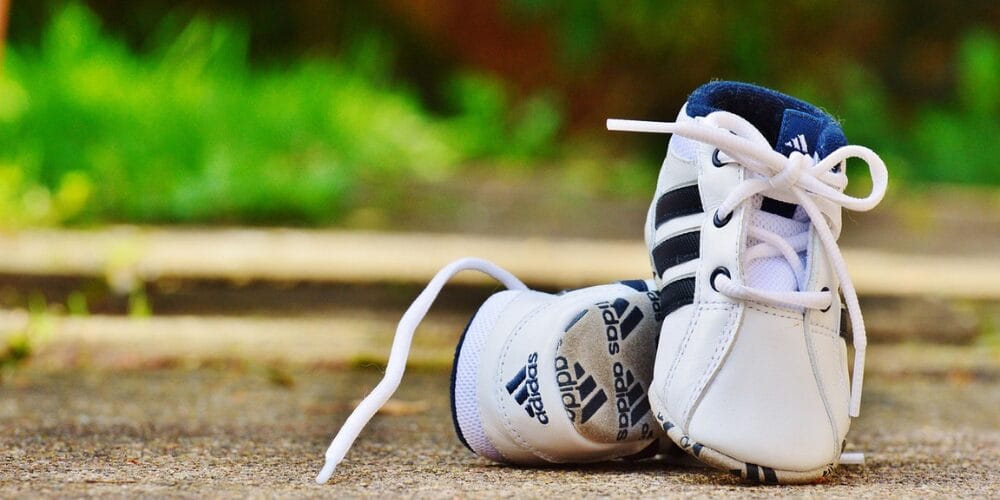
- Walking shoes: Walking shoes have moderate cushioning, which is useful for light daily physical activities, such as jogging and walking. Walking shoes feel light due to this cushioning.
- Running shoes: Running shoes have additional cushioning, which provides support from the heel to the forefoot, absorbs high impacts due to their extra padding, and protects the joints during intense and long runs.
🟢 Soles
The sole is called the foundation of the shoe; no matter how strong the shoe is, if its sole is weak, it is nothing. The difference between walking and running shoes becomes very clear from the sole.
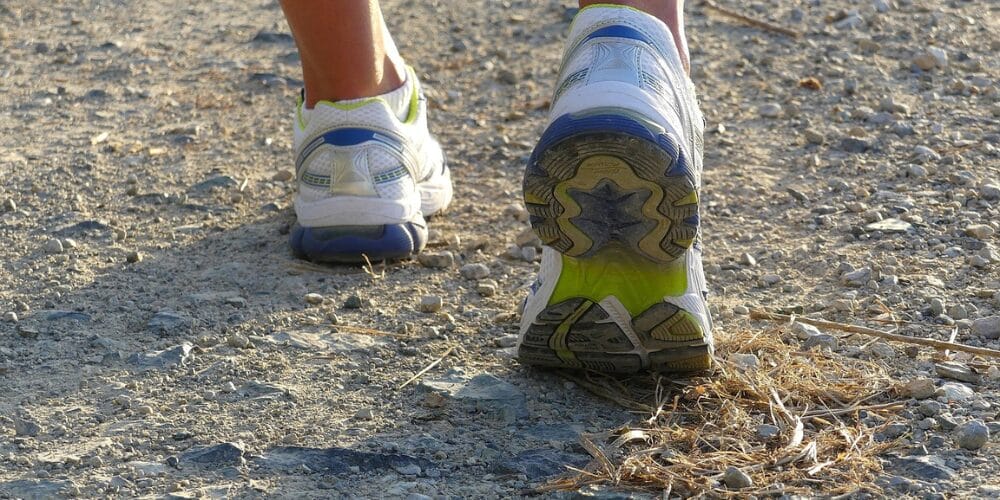
- Walking shoes: The soles of walking shoes are flatter and lighter, which eliminates fatigue and makes the feet smoother, but these soles are designed for low-intensity activities such as daily walking, long walks, etc.
- Running shoes: The soles of running shoes are quite strong, featuring high-level grooves and traction. These shoes provide stability, reduce impact on the joints, and propel the runner forward. They can also be used on uneven and rough surfaces.
🟢 Heel Drop
Heel drop refers to shoes that have a height difference between the heel and toe, meaning that they are not at the same distance from the ground. Heel drop is great for both walking and running shoes.
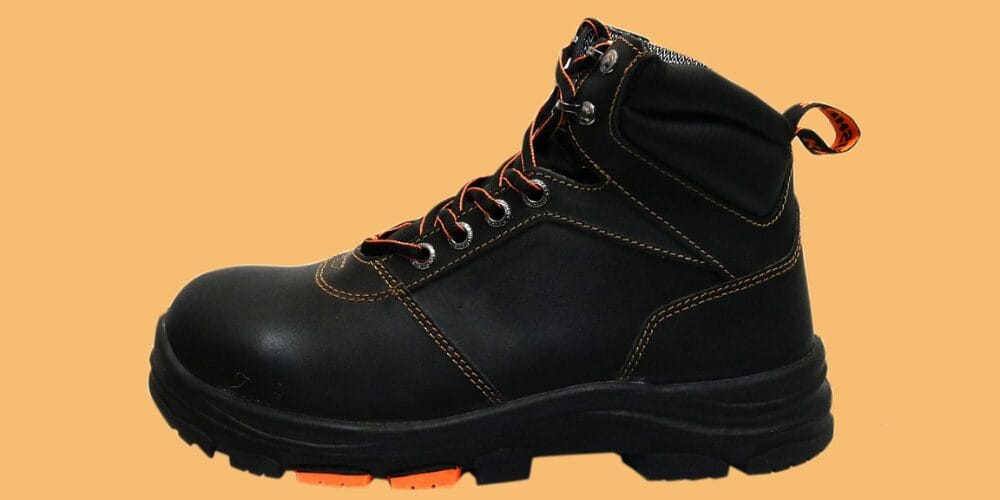
- Walking shoes: Walking shoes have a very low heel drop, measured in millimeters, which is why the design offers a natural gait and provides a smooth transition from heel to toe, reducing stress while walking.
- Running shoes: Running shoes have a high heel drop, which provides more cushioning and stability, as runners land differently, on the heel, midfoot, and forefoot, etc. This design also reflects the natural gait and absorbs additional shock.
🟢 Durability
The durability of the shoes is very important; however, the durability depends on the activity, and there is a shoe made for each activity.

- Walking shoes: Walking shoes are made for low-impact activities. Their material is soft and light, which is comfortable during long walks. This is why walking shoes cannot withstand heavy and strenuous activities.
- Running shoes: Running shoes are made for hard and fast activities. Their soles are made of rubber, the upper is very strong, and there is high-quality cushioning. That is why running shoes can be used on rough terrain, for long-distance running, and repeated heavy use, and due to their use in these activities, they are long-lasting.
🟢 Flexibility
Flexible shoes guide the foot in its natural direction of motion, which increases performance and reduces the risk of injury.
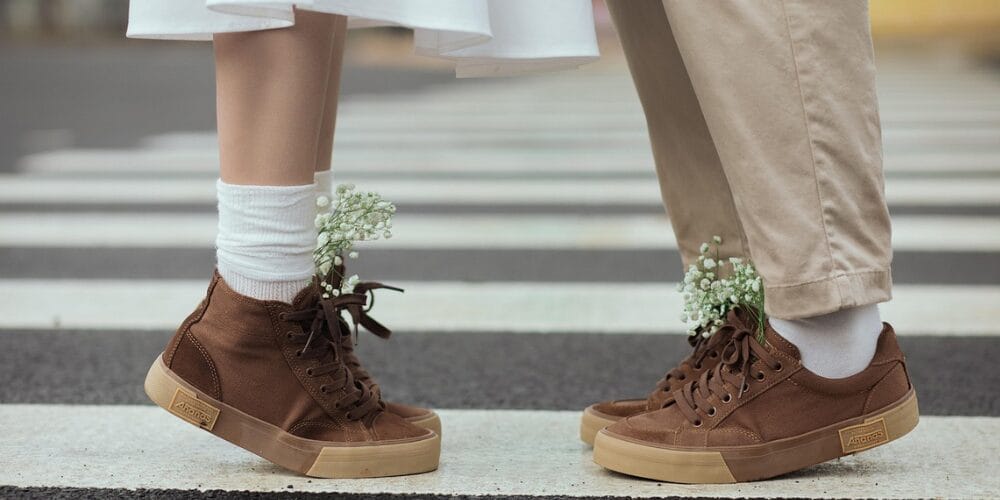
- Walking shoes: Walking shoes have flexible midsoles that support the natural rolling motion of the foot, improving walking performance and providing comfort on long walks.
- Running shoes: Running shoes have more flexibility in the midfoot and forefoot. This unique design supports different running styles, making running smooth and efficient, and conserving energy.
Design and Features of walking and running shoes
Although both walking and running shoes are intended to provide comfort and support, their designs serve different needs. So, they often add cushioning to the heel to reduce impact absorption. Walking shoes offer arch support and are usually stiffer than running shoes to prevent the foot from overextending.
Run-on-going shoes, on the other hand, are designed to handle the high-impact forces experienced during running. They typically have additional cushioning in both the heel and forefoot. The soles are designed to provide traction and stability. Focused on flexibility in the forefoot to support the natural flexion of the foot during running, many running shoes feature advanced performance-enhancing technologies, including energy-return systems.
In Summary, the primary difference is cushion flexibility and level of support, each tailored to the specific demands of walking or running.
When to Choose Walking Shoes
Here are some steps when choosing walking shoes. Before choosing walking shoes, it is important to know about them because choosing the best walking shoes is essencial for foot health.
- 1. Understanding Your Walking Pattern
Choosing the right walking shoes starts with your walking style. Do you walk on flat surfaces or uneven terrain? Are you a fast walker or do you prefer to stroll? A standard walking shoe with good arch support and heel cushioning will suffice for those who walk at a moderate pace stability features.
- 2. Foot Health Considerations
Foot health is an important factor for people with flat feet or high arches. Look for shoes with extra cushioning and soft insoles.
- 3. Practical Tips for Choosing Walking Shoes
When buying running shoes, prioritize comfort and support. Try on more than two or three pairs to get a feel for the fit, and walk around the store to try and check that the heel has a snug fit and that there is enough room in the toe box to wiggle the toes. Finally, consider the breathability of the shoe as good ventilation can keep your feet dry and comfortable during long walks.
When to chose the running shoes
I know if you reached this part of the blog, you must have noticed what the difference is between walking and running shoes? so here are some other steps when choosing running shoes. Before choosing running shoes, it is important to know about them.
- Gait Analysis of running shoes
The most important thing in choosing running shoes is to understand your gait. The trick is to accurately determine whether your feet are too inward, outward, or neutral. Many stores understand gait analysis, so they can give you the best guidance on running shoes that provide the right level of support and stability.
- Training and Running Goals
When shopping for a running shoe, shopping thoughtfully is also a part of your training, which is an important goal. If you are a light walker and runner or are just starting to run, a well-cushioned shoe is perfect for you. But if you are an experienced or competitive runner, then you have to invest and buy the best shoes because the best running shoes are not going to be hurt.
- Practical Tips for Choosing Running Shoes
Before running after wearing running make sure that there is plenty of space in the box. To avoid discomfort during long runs, the heel should also be cushioned to avoid slipping. Consider the terrain you are running on and choose a shoe with adequate traction properties.
- Matching Shoes to Running Distances
For the selection of running shoes, it is important to choose the distance that you intend to run in these shoes. Low-cushioned and lightweight shoes are best for short distances, but if you plan to train or do long daily runs, you should opt for cushioned shoes and invest more money.
Important points about health and performance
There are some important things to know.
- The Risks of Wearing the Wrong Shoes
Whether the shoes are for walking or running, it is important to know a few things before wearing them. Such as foot and ankle pain, shin pain and plantar fasciitis, etc., so neither wearing the wrong shoes nor the opposite.
- Impact on Comfort and Performance
Comfort is strongly related to performance. When your foot is well-supported and well-cushioned, you can walk and run long distances without any discomfort. It not only increases your physical fitness but also improves your mind.
- Preventing Long-Term Damage
Buying the best shoes can solve many of your problems, like joint pain, back problems, muscle tension, etc. If you want to stay healthy and fit for a long time in the future, choose the best shoes according to your activity.
Shopping Tips and Recommendations
you are now ready to buy shoes for walking or running, but you have to follow these steps carefully, too.
- Try before buy
Before buying shoes, try to visit a store that has trained staff who understand how to find the perfect shoe fit and how to evaluate a comfortable shoe. They also say that if you run or walk in it, try to buy shoes from such a store.
- Understanding the Foot Type
Before buying shoes, you need to know your foot type, whether you have flat arched feet or neutral every foot has different types. So the method can also be, as mentioned above, you can go to a store and know the different types of feet from an experienced person, or you can go to a store online and get your foot type from the seniors there.
- Staying Within Budget
Sometimes there’s a famous brand, but things are bad, and sometimes there’s something cheap but it’s great, so you have to run it and decide for yourself if it fits your budget. If so, you can take it.
Related Comparisons You May Like
- Walking Shoes vs Training Shoes
- Walking Shoes vs Trail Shoes
- Walking Shoes vs Tennis Shoes
- Walking Shoes vs Sneakers
- Are Hiking Shoes Good for Walking?
Conclusion
Understanding the difference between walking and running shoes is essential for anyone looking to enhance their fitness routine and protect their health. As Dr. Adam Tenforde said, make sure to choose the right shoes; they will give you comfort and increase your performance. According to Wikipedia, walking shoes are designed with flexibility in the forefoot and arch support for sustained comfort, which differs significantly from the structure of running shoes.
This can help prevent injury, whether you’re an experienced athlete or just starting, in your fitness routine, maintain your fitness, and improve your lifestyle. You should use the money to buy the right shoes. So are you ready to find your perfect pair? Visit our store for expert advice and a wide selection of high-quality running and walking shoes. So if you want to improve your jogging or running experience, don’t forget to choose the best shoes because it is very important.
For those looking for expert-recommended options, we’ve compiled a list of some of the best walking shoes that are also useful in their medical lives.
FAQs
Q1. Can I use the same shoes for walking and running?
Yes, it is okay to use the same type of shoe for running and walking. However, the design of running shoes incorporates more cushioning and is better suited for high-impact movement, while walking shoes prioritize comfort, flexibility, and support. If your priority is comfort and flexibility, then walking shoes are best, but if you prioritize long-term performance and foot health, then use each type for its specific purpose.
Q2: Are running shoes okay for walking?
Well, there is no harm in it, but in general, it is better if the thing is used for the purpose for which it is made. It will also not affect the health of your feet.
Q3. What should someone look for in shoes if they have flat feet?
Shoes with good arch support and strong features are best for flat feet, and motion-control shoes are often recommended because they prevent most of the stress, but if you have foot concerns, consult an expert.
Q4. Do I need to wear my new shoes?
Most new shoes will feel comfortable immediately, but some may require a short break to allow your feet to adjust.
Q5: Are running shoes okay for walking?
Yes, it is permissible to use walking shoes for running, and it will not harm your feet. However, it is not considered correct to use walking shoes for running to achieve better support and comfort. It is proper to use shoes designed for each activity.
Q6. Are walking and running shoes the same or different?
Walking shoes and running shoes are not the same; rather, they are different. Walking shoes are designed to provide comfort from heel to toe, while running shoes are designed to absorb the impact of running. Running shoes have extra cushioning.
Q7. How do you know if shoes are for running or walking?
Running shoes have a bit more cushioning, a lighter construction, and a thicker sole to absorb impact while running, while walking shoes are a bit heavier and more flexible, providing consistent comfort.
Checking the product label description can also help you determine whether the shoes are suitable for walking or running.

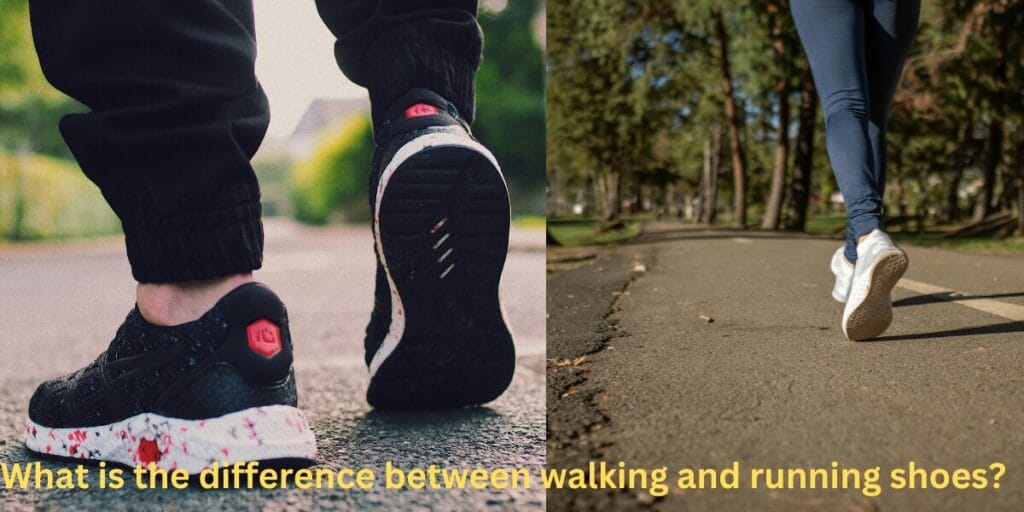
Mashallah very Nice 👍
What a Amazing 👏 Article’s wowo ❤